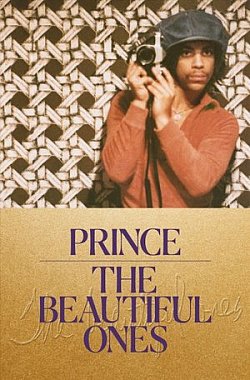Graham Reid | | 2 min read

He channeled psychedelic Jimi Hendrix, Sly Stone funk and the sex'n'soul salvation of Marvin Gaye among others to create a unique musical amalgam which bridged genres.
And, with his extraordinary Sign O The Times double album in 87, his own idiom: Prince music.
There was always mystery surrounding Prince Rogers Nelson – who died in April 2016 at age 57 – and he was evasive if not downright secretive at times. Interviews were not to be taped, people were kept at a distance, the myths of his life became the reality.
So when he publicly announced in March 2016 he was writing a memoir it came as a surprise, not the least to his nervous collaborator Dan Piepenbring who -- although an editor at The Paris Review --had never written a book or even edited one. He was also white and at 29 a late worshipper at the church of Prince.
Piepenbring had pitched for the project and won an audience with Prince after the musician had passed on other contenders. Prince kept the dialogue going, the book was to be titled The Beautiful Ones.
In the weeks between meeting Piepenbring and his death, Prince had elaborate plans for what this book could be, but nothing was settled upon.
Prince didn't get far into contributing, just 28 handwritten pages of digressive recollections in his florid longhand and shorthand (“2” for two/to, “eye” for I and so on) about his parents, childhood, girlfriends and music. They came peppered with his vague personal philosophy.
So The Beautiful Ones as it appears now is not a memoir, not the book Prince intended and it certainly isn't the “jewel-like fragment” as one British reviewer had it.
It is the book about a book never written, these pages filled with photographs, hand-written lyrics, his screenplay for what became his film Purple Rain and numerous short quotes from interviews.
Aside from those photos from Prince's voluminous archives which are of interest, the largest – and most insightful – section belongs to Piepenbring who explains how he was brought onboard (although he never knew why he'd been chosen), the meetings – or near encounters – with Prince about the project, and how the object in hand came together after the death of its subject.
Although the rule was unspoken, Piepenbring didn't tape his few meetings with Prince during which the singer apparently spoke of how black artists are neglected, marginalised or compartmentalised by the white music industry executives (“Can we write a book that solves racism?” he asked), discussed Ayn Rand's The Fountainheadand took Piepenbring to a private viewing of Kung Fu Panda 3 . . .
The book such as it is, understandably, reads like the author's first draft of half-formed ideas with a fascinating introduction by its editor.
So, if you want to understand the elusive Prince this isn't going to be much help.
But you need only listen to his 2018 solo album Piano and A Microphone which is what he was touring before his death, or immerse yourself in last year's Super Deluxe Edition of his break-though 82 album 1999 where his story and all those musical spirits in his head, heart and groin were in pop-funk and rock'n'soul harmony.
Prince may be gone, but that music will live on.
The Beautiful Ones by Prince, edited by Dan Piepenbring. Penguin Random House $55





post a comment